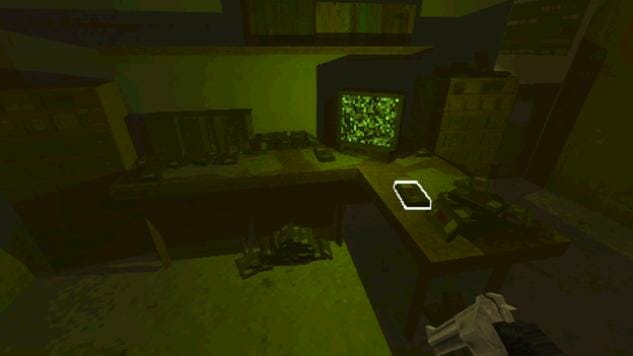N64 and PS1 Demakes Are The New Pixel Art Wave
Images from Paratopic
Years ago, through a coincidentally well-timed combination of ‘80s kid nostalgia and improved games dev accessibility, videogames went through the sort of retrograde renaissance of the pixel art pop trend. Dusting off the old but (by no means obsolete) visual techniques and conventions of the early digital era, it started a wave that helped support an indie games scene that was then still in its infancy, with titles like Fez and Terraria leading the way. Fast forward to now, and a new trend seems to be emerging, one that also relies on a bit on nostalgia and improved accessibility to development and design tools. Browse Itch.io any day of the week and you’ll see lots of “low poly art” games inspired by the look and feel of the N64 or the original PlayStation. I’ve written before about the appeal of using this as an art style in horror games, but, curious about what developers who use low poly art think about the growing number of games tapping into this unique loo, I reached out to makers of some of the best contemporary examples of the aesthetic to ask if there’s something to it.
“I think that as far as trends go,” says Paratopic co-creator Jessica Harvey, “you can map a broadly equivalent length of time between the wave of 8/16-bit indies and the recent emergence of low-fidelity 3D indies as you can the length of time between those two styles’ original predominence.” As a new generation of small development teams and solo games designers comes of age, it makes sense for them to gravitate towards an aesthetic that, resource-wise, is more accessible. The cultural touchstones of their formative years, she points out, are an ideal source of inspiration. “Stick with what you know, right?” For Harvey, however, the effort was actually to tap into an unease that existed outside of the player’s personal experiences. “Past the realities of resource-free small scale development, the main point of interest for me was playing with the medium and presentation. Using the resonance of how that era stands against modern fidelities and its inherent jankiness as a tool, as something analogous to say… modern cinema utilizing grainy filmstock or shooting in black or white. Nostalgia underpins things, but the conscious intent is to exploit a very specific, more low-level and primal emotive response independent of specific memories.”
Harvey isn’t the only developer who pursued the look for deliberate creative reasons. Power Drill Massacre developer Ben, who goes by PuppetCombo professionally, says, “For me, it just fit my skill set and lifestyle plus I like the way it looks.” The games he makes are largely inspired by slasher films, bearing names like Babysitter Bloodbath and Meat Cleaver Mutilator. While Ben pursued the low poly art look in part because he was, in his words, attempting to make the games he’d wanted to play as a kid, he also just likes it. “I feel like modern graphics are in an awkward period,” he says. “They get close but still miss 1:1 photorealism and that actually looks a lot worse to me than something stylized.” He also argues that low poly art or nostalgia alone can’t make a good horror game. “[For] a low poly game to be scary, I think I’d still find it scary with modern graphics or pixel art. That said, I think VHS and CRT effects make it scarier. Like watching a beat up rental tape and wondering about the people who made it and what sort of shocking things they have in store. Of course, the internet has exposed the mystery behind everything. Yes, nostalgia plays a big part in it but I also think it genuinely looks good (when done well of course).”
Tyler Allen, meanwhile, initially agreed to work on Concluse, a Resident Evil inspired title, because the aesthetic fulfilled a much-needed niche, which would give the game a leg-up on the indie scene. But to him, there’s a certain forbidden appeal to tapping back into the obsolete technology that time has all but forgotten. He says, “Games making use of PS1 era graphics are having success by not only inducing a feeling of nostalgia in our older audiences, but also by bringing something new to the table for younger players who never got a chance to experience them first hand. I think that the artistic choice for many indie developers likely lies with the [aforementioned] …feeling of nostalgia, and novelty, and that it can be seen as quicker or even easier. As someone who has also worked on low poly assets and am trying to now work on creating more detailed works I can relate.”